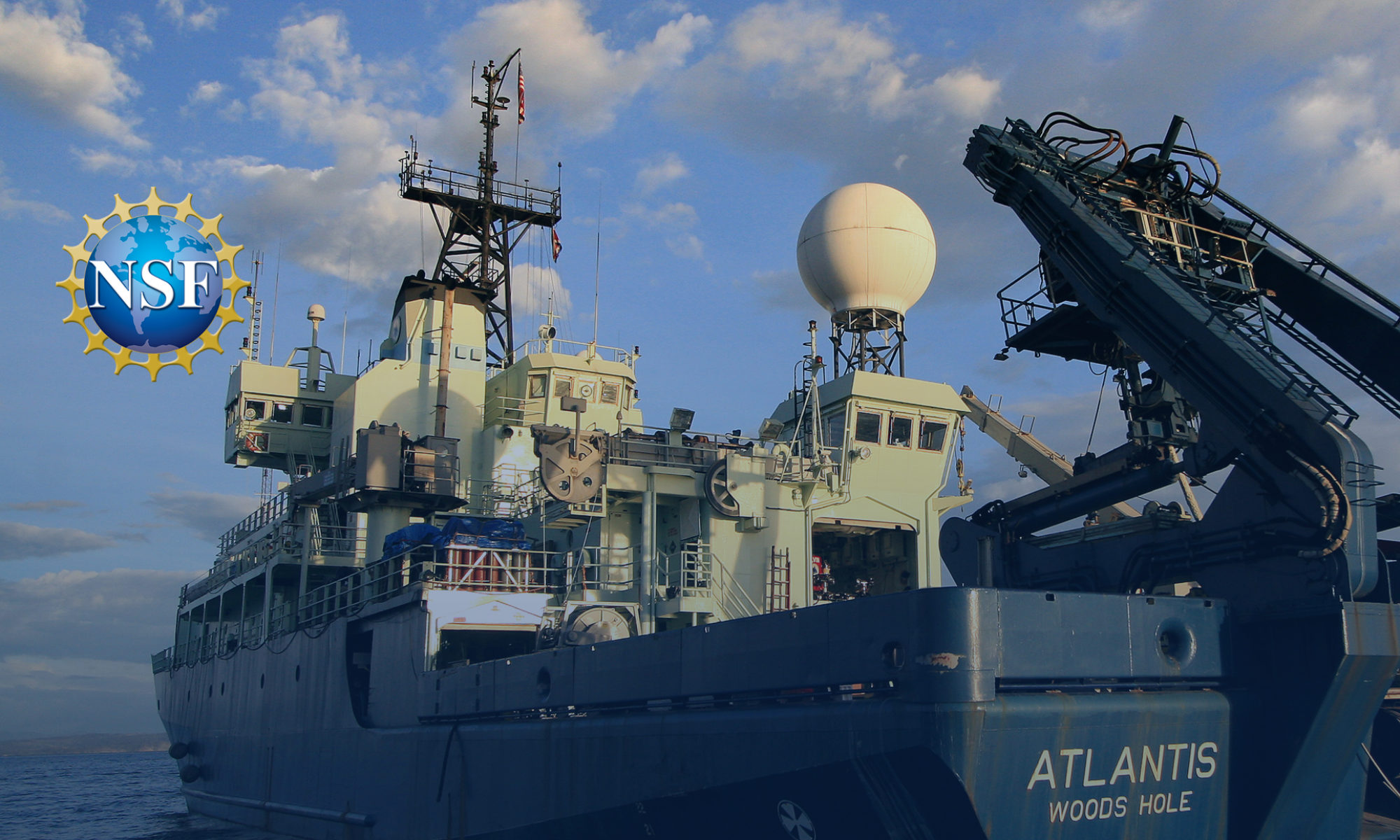Program Leaders
Dan Fornari (Principal Investigator), Woods Hole Oceanographic Institution

Dr. Daniel Fornari is a marine geologist and emeritus research scholar in the Geology & Geophysics Department at the Woods Hole Oceanographic Institution (WHOI). He has been at WHOI since 1993, conducting groundbreaking research in the fields of marine geology, submarine volcanism on seamounts and mid-ocean ridges, hydrothermal vent integrated studies, ocean exploration and deep- submergence technology innovations. In his nearly 45 years of seagoing experience, Dan has participated in 150 research cruises in the Pacific, Atlantic and Indian Oceans, and has completed over 100 dives in Alvin and other Navy submersibles. Together, he and Dr. Susan Humphris developed the Dive and Discover website in 2000 (www.divediscover.whoi.edu), an education and outreach website that brings the excitement of oceanographic science to thousands of students each day. He also has innovated a diverse suite of deep- sea instrumentation and imaging systems for monitoring and observing seafloor phenomena and provides those to academic and industry colleagues via the WHOI-MISO Facility (http://www.whoi.edu/main/instruments/miso).
Patricia Gregg (Principal Investigator), University of Illinois
Bobbie John (Principal Investigator), University of Wyoming
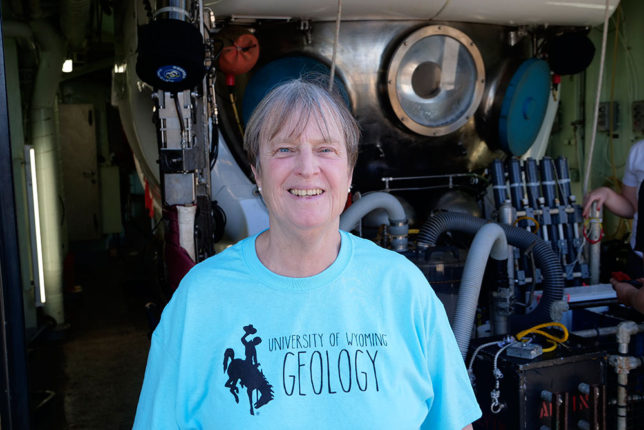
I am a professor in structural geology and petrology at the University of Wyoming. Why work at sea when I live on the continent at nearly 2300 m above sea level ? Well, my research interest focuses on processes of lithospheric deformation (both on the continents and in the oceans), using ‘field studies’ to document natural examples of the processes involved in extension. By necessity, I combine petrologic, geochemical, microstructural and geophysical studies, to constrain the nature of extension processes (magmatic and structural), assess rates of tectonic processes, and the space-time distribution of deformation and magmatism. My recent work has led to advancing our understanding of crustal growth and plate spreading processes at slow and ultra-slow to fast spreading mid-ocean ridges. This cruise provides me an opportunity of learn more about eruptive magmatism at the EPR, associated vent systems, and biota, as well as help mentor early career scientists in collecting data and plan for future marine research. Very excited to be joining the expedition.
Ken Kostel, Woods Hole Oceanographic Institution
Michael Perfit (Principal Investigator), University of Florida

Dorsey Wanless (Principal Investigator), Boise State University
Early Career Scientists
Karthik Anantharam, University of Wisconsin-Madison
Rika Anderson, Carleton College

I am interested in the ecology and evolution of microbes and viruses living in deep-sea hydrothermal vents. I ask questions like: how do microbes evolve in response to viruses, and vice versa? How do genes flow and move between microbes and viruses in the deep sea? How does the environment mold microbial and viral evolution? I’m hoping to collect some samples of both microbes and viruses from hydrothermal vents on the East Pacific Rise. I plan to sequence their DNA to better understand who is there, what they are doing, and how they’re evolving over time.
Molly Anderson, University of Idaho
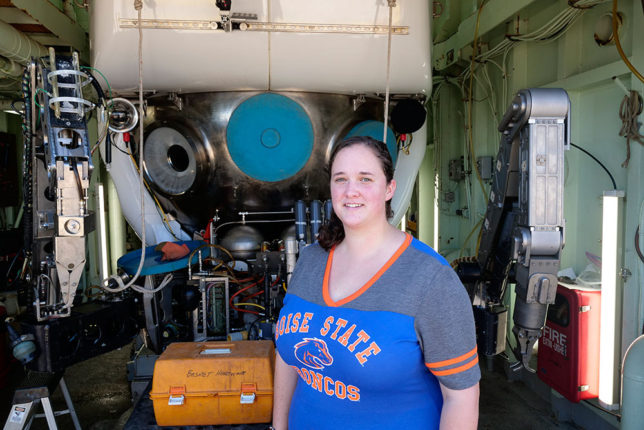
Alysia Cox, Montana Tech

Aida Farough, Kansas State University

My research interest is measuring diffuse and high temperature heat flux at EPR 9 50N.
Heather Fullerton, College of Charleston
I am a microbiologist and am interested in the diverse metabolism of microbes and their colonization dynamics. I have a PhD in Microbiology from Cornell University and my expertise is in microbial genomics and metabolism. Hydrothermal vents are of particular interest to me because the microbes are the primary producers. In this expedition I will be placing down colonization chambers for the microbes and after incubation on the seafloor, I’ll determine what grew and their metabolic potential. All of that will be done by sequencing the DNA after the incubation period. I will then look for similarities and differences across the different venting locations and from previous expeditions. I’m excited to learn more about the EPR from my experience in Alvin and from all the other scientists on the ship.
Dalton Hardisty, Michigan State University

Santiago Herrera, Lehigh University

I am a deep-sea biologist working at Lehigh University. My expertise is in molecular ecology and evolution. I have a PhD in Biological Oceanography from MIT and the Woods Hole Oceanographic Institution. In this expedition I will be focusing on locating and sampling invertebrate communities using Alvin and Sentry. Both of these vehicles are new to me, and I have great expectations of what we can achieve with them. My plan is to improve our knowledge of the ways by which animals are able to acclimate or adapt to the extreme conditions at hydrothermal vents by analyzing their genomes.
Ross Parnell-Turner, Scripps Institution of Oceanography

Valentina Romano, University of Illinois at Urbana-Champaign (UIUC)

I got my PhD in Earth Sciences at Sapienza University of Rome (Italy), working on numerical models of fluid migration in fractured media. During my PhD, I joined the OASIS expedition in 2016 and I was involved in the geophysical analysis of the data collected along the 8°20’N seamounts chain, located along the Siqueiros Fracture Zone. As post doc at UIUC I’m working on numerical models of melt generation, migration and extraction at Mid Ocean Ridges, combining geodynamic and petrological approaches. The collection of data at 8°20’N will provide new important constrains for my numerical model to study the formation and evolution of the seamounts chain. I’ll also be interested in the magnetic data analysis at 9°50’N, to investigate crustal magnetization and hydrothermal alteration.
Matt Smith, University of Florida
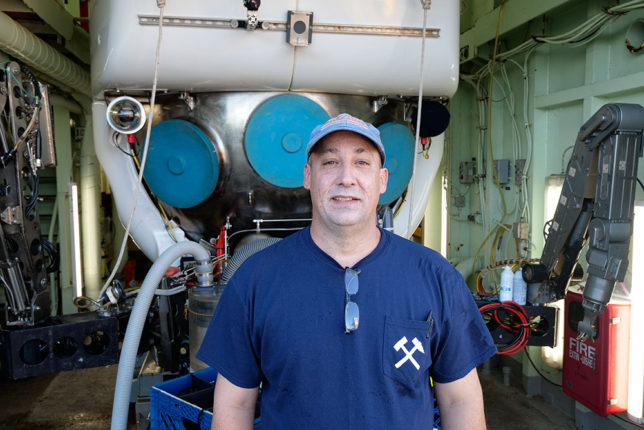
Drew Syverson, Yale University
Carolyn Tepolt, Woods Hole Oceanographic Institution

I’m in my second year as an Assistant Scientist in WHOI’s Biology department. My research integrates genomics, field ecology, and ecophysiology to explore adaptation in marine systems. A particular area of interest is the process of rapid adaptation and differentiation – how marine species, particularly highly dispersive species, adapt to new or changing environments over short time scales (days to years to centuries). Much of my work to date has focused on invasive coastal crabs; on this ECS cruise, I’m planning to continue some recent research into similar questions in hydrothermal vent crabs. If all goes well with sampling, I’ll run an experiment to test how these crabs respond physiologically to rising temperatures. I plan to monitor their heart rates and changes in gene expression as temperature rises, looking for thresholds in their capacity to cope with high temperatures and the genes they use to do it. I also plan to sample vent crabs and squat lobsters for genomics and parasitology, to expand a data set started during my first oceanographic cruise (also at 9NEPR).
Elizabeth Trembath-Reichert, Woods Hole Oceanographic Institution/ Arizona State University
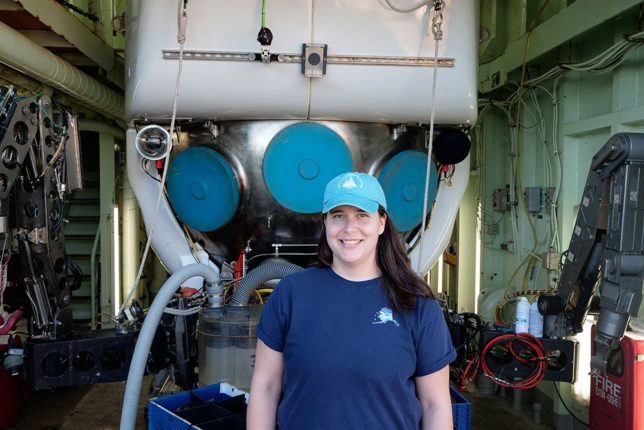
I am a geobiologist studying microbial life in the deepest, darkest portions our planet to understand its limits, origins, and extensibility beyond Earth. I integrate a range of techniques, including geochemical, gene-based, and statistical methods, and apply them across various scales ranging from molecules to oceanic basins and seconds to millions of years.
Outreach Specialists
Mel O’Callaghan, Australian Council for the Arts
Alexis Pedley, Australian Council for the Arts
